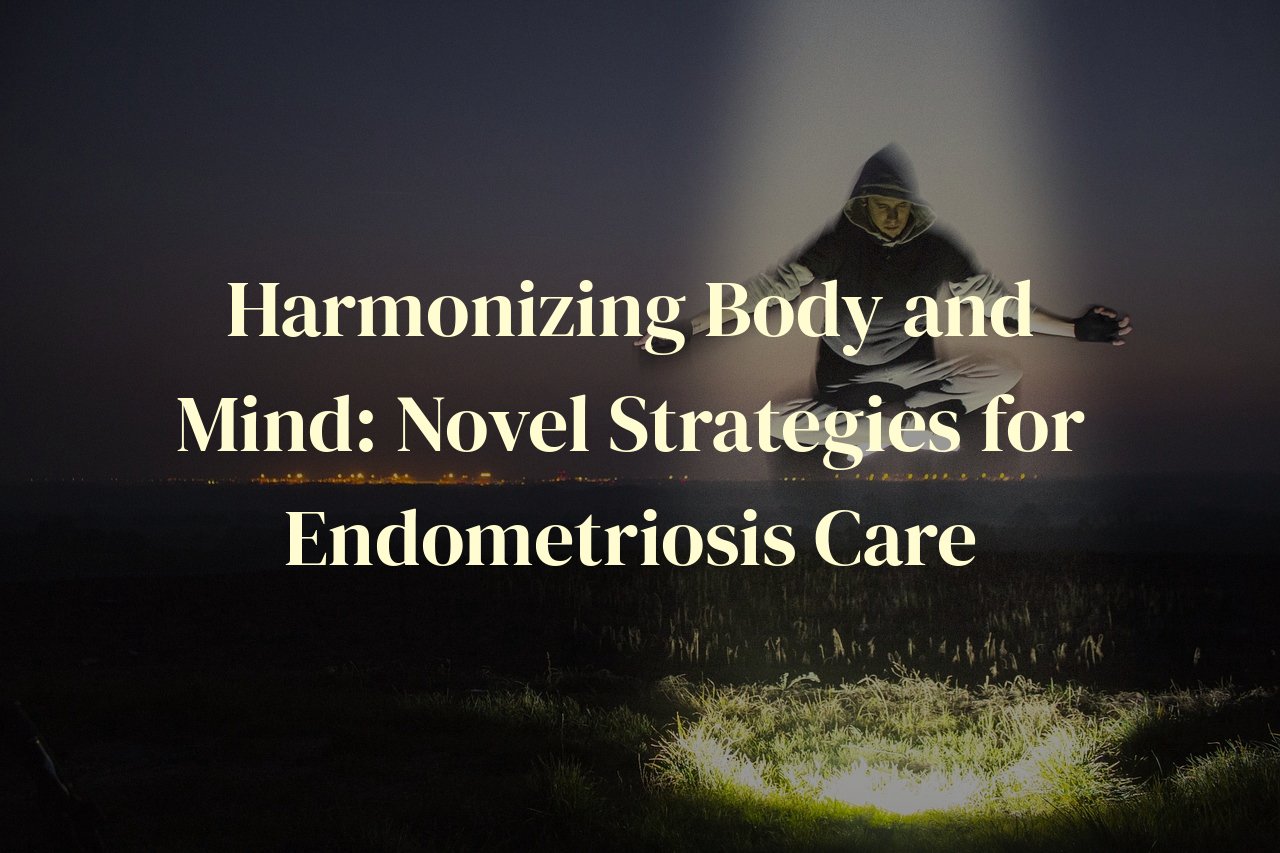
Endometriosis is a condition that intertwines the fabric of biology, lifestyle, and well-being, affecting countless individuals on their journey toward health. This blog will explore the delicate tapestry of integrative medicine, specifically focusing on merging conventional medical knowledge with complementary practices for managing endometriosis. Readers will discover a holistic roadmap to potentially alleviate symptoms and improve quality of life, emphasizing the importance of treating the individual as a whole.
By delving into this post, you’ll gain insights into novel strategies that may empower you with additional tools to confront endometriosis. Tuning into your body’s signals and synergizing them with personalized treatment options is not just a possibility; it may become your reality as we explore these integrative approaches together.
Table of Contents
Decoding Endometriosis: Understanding the Condition
For many, endometriosis has been a shadowy figure lurking in the depths of their lives, an enigmatic adversary whose grasp extends far beyond physical torment. From personal experience, I can attest that deciphering the language of this condition is akin to piecing together a complex puzzle with ever-shifting contours. To shed light on this relentless condition, we must embark on an intricate journey into its very essence.
Endometriosis occurs when tissue that closely resembles the lining of the uterus, or endometrium, starts to grow in other regions of the body – most commonly within the pelvic cavity. This is not just a benign invasion; the displaced tissue behaves as it would inside the uterus: thickening, breaking down, and bleeding with each menstrual cycle. Yet, with no pathway to exit the body, the tissue becomes trapped, often leading to the formation of painful cysts and adhesions.
Symptoms of endometriosis can be as diverse as the individuals it affects, though typically highlighted by agonizing periods, pelvic pain, and sometimes infertility. In my journey, the monthly skirmishes against the flare-ups of sharp, stabbing pain served as a clarion call to seek out understanding and relief. Science unravels part of the mystery by pointing out genetic, hormonal, and immunological factors at play, but a complete blueprint of causality remains elusive, thereby presenting obstacles in formulating a universal approach to treatment.
Lamentably, the condition’s propensity for masquerading as other ailments often leads to misdiagnoses and years of untreated suffering. The imperative for raising awareness and fostering a greater understanding within both the medical community and the public sphere cannot be overstated. As silent as endometriosis might be, it’s a silent scream that echoes through the lives of approximately 176 million affected individuals worldwide, making it vital that we amplify their voices through education and advocacy.
In a refrain all too common, my own diagnosis was a pilgrimage through confusion and dismissal before arriving at a place of validation. Advancing toward embracing strategies for management, including the multi-faceted approaches to be discussed, is like emerging into the light after wading through the darkness. It is in the weaving together of knowledge and compassion that we can begin to harmonize body and mind in the quest for respite and health.
Conventional Treatments: The Cornerstone of Management
Endometriosis is a complex and often painful condition that can deeply affect a woman’s quality of life. As someone who has navigated this path, I understand the urgency of finding a treatment that offers relief. Conventional treatments remain pivotal in managing this condition. Among them, medications play a central role with nonsteroidal anti-inflammatory drugs (NSAIDs) often prescribed to alleviate pain. For many, this first line of defense provides necessary comfort, helping to reduce inflammation and manage flare-ups.
Hormonal therapies are the lynchpin of managing endometriosis, aiming to stabilize the body’s hormone fluctuations that can exacerbate the condition. Oral contraceptives, often referred to as birth control pills, are commonly used to decrease menstrual flow and reduce the pain associated with endometriosis. Progestins, like medroxyprogesterone acetate, and gonadotropin-releasing hormone (GnRH) agonists may be leveraged to induce a pseudo-menopause state, offering respite to those in the throes of severe symptoms.
For cases where medication isn’t enough, surgery is another crucial conventional treatment. Laparoscopy, a minimally invasive procedure, allows for both diagnosis and the removal of endometrial tissue. It carries the hope of reduced pain and improved fertility for many. Sometimes, more extensive surgeries like laparotomy or even hysterectomy are considered, depending on the individual’s condition and desire for future fertility.
While these treatments are foundational, they aren’t a panacea. As an advocate for holistic health, I truly believe in complementing these conventional approaches with dietary modifications, stress management techniques, and other integrative therapies to achieve the best possible outcomes. It’s about creating a personalized plan that doesn’t just treat the symptoms — but also attends to the emotional and physical well-being of each unique individual grappling with endometriosis.
Dietary Adjustments: Nourishing Your Body Against Pain
Embarking on a journey to manage endometriosis, I’ve learned that our diet can be a powerful ally in mitigating discomfort and inflammation associated with this bewildering condition. I’ve delved into the ocean of nutritional wisdom and surfaced with an understanding that certain foods can be medicinal, working to soothe the body’s aggravated tissues and systems.
As someone dealing with the unpredictable waves of endometriosis pain, I can attest to the relief that comes from embracing anti-inflammatory foods. Omega-3 rich treasures from the sea, like salmon and flaxseeds, aren’t just a delight for the palate; they wage war against inflammation, often reducing the pelting storms of pelvic pain.
The Mediterranean diet, which I adopted out of curiosity, has become a beacon of hope. Its emphasis on whole grains, legumes, fruits, and vegetables—especially leafy greens rich in iron which is crucial given the blood loss from intense periods—supports a body under siege. The diet also champions healthy fats such as olive oil, and I’ve found this switch from saturated fats to be transformative for my well-being.
Moreover, my encounter with turmeric has been nothing short of magical. This golden spice, with its active compound curcumin, didn’t just add vibrancy to my dishes but also to my life, as it seems to dull the edge of pain with its potent anti-inflammatory properties. Coupling it with a pinch of black pepper enhances its absorption, making it a frequent guest at my dining table.
One unexpected hero in my diet has been the humble ginger. This zesty root, steeped in tea or grated fresh into meals, not only adds a kick to my culinary creations but also helps to kick the discomfort to the curb. Its effectiveness is rooted in its ability to quell nausea and reduce muscle soreness, both comrades of endometriosis.
Lastly, let’s not overlook hydration. Water—pure, simple, and oft-underestimated—carries nutrients, hormones, and relief throughout the body. It’s an elixir in its own right, flushing away toxins and keeping bloating at bay, a common nemesis in the life of someone with endometriosis.
Each dietary adjustment has been a stepping stone towards balance. As I continue to refine my food choices, I can’t help but be in awe of the body’s response—a whispered promise of harmony as we navigate the turbulent seas of endometriosis together.
Mind-Body Synergy: Holistic Exercises and Stress Reduction
Living with endometriosis has taught me the profound impact that holistic exercises and stress reduction techniques can have on our well-being. It became evident to me that nurturing the connection between mind and body is an essential, yet often overlooked aspect of managing endometriosis. To those embarking on this journey, I share insights drawn from my own experiences and research.
Yoga has been my sanctuary; a place where stretching and breathing coalesce, offering both physical relief and mental serenity. The slow, purposeful movements help reduce the pelvic pain associated with endometriosis, while pranayama (breathing techniques) fosters an inner calm, essential for combating the stress that often exacerbates symptoms.
Pilates is another ally in the fight against endometrial pain. Core strengthening exercises not only improve physical stability but also promote efficient nerve function. A stable core seemed to lessen the severity of pain episodes, and by focusing on precision and control, Pilates provides a meditative element that supports mental clarity.
Guided meditation and mindfulness became my daily retreats, gateways to understanding and managing the emotional toll of endometriosis. These practices taught me to observe my thoughts and sensations without judgment, allowing me to step back from the pain and reduce the stress response that so often accompanies chronic illness.
Lastly, progressive muscle relaxation brought an unexpected respite from pain. By tensing and then releasing different muscle groups, I learned to detect subtler shades of relaxation. This method proved potent during flare-ups, granting me a degree of control over a disease that often leaves one feeling powerless.
Endometriosis care isn’t solely about alleviating physical symptoms; it’s about creating harmony between body and mind. The techniques I’ve shared might not universally work for every warrior out there, but integrating them into a tailored care regimen can pave the way toward holistic healing and an enriched quality of life.
Complementary Therapies: Bridging the Gap to Whole Health
Embarking on my journey with endometriosis, I explored beyond traditional medicine to discover a treasure trove of healing practices that complemented my standard care. Each complementary therapy I tried seemed to be a piece of the complex puzzle of managing this challenging condition, contributing to a more holistic sense of well-being and aiding in bridging the gap to complete health.
Acupuncture emerged as a powerful ally, with its fine needles and strategic points offering an unexpected respite from pain and inflammation. As the acupuncturist targeted specific meridians believed to correspond to reproductive health, I noticed a kindling of relief that went beyond the physical, soothing the erratic storms of my emotional landscape as well.
Then there was the world of herbal medicine, where plants became my soothing companions. Herbs like turmeric and ginger, famed for their anti-inflammatory properties, were woven into my diet. Meanwhile, teas brewed from chasteberry or red raspberry leaf offered a grounding ritual that doubled as a means to balance hormones and ease menstrual cramps.
My skeptic’s heart was wary when I first heard of the benefits of antioxidant-rich supplements like N-acetylcysteine and omega-3 fatty acids. But, with my body as my lab, I began to sense their subtle impact. The scientific rationale of reducing oxidative stress and bolstering my body’s defenses against cellular damage became my lived truth as I experienced the slight, yet meaningful improvements in my symptomatology.
Physical therapists specializing in pelvic health taught me that internal landscapes can be nurtured through movement. Their guidance in pelvic floor strengthening and relaxation exercises gifted me with a new level of body awareness and control over the flares of pain, making a palpable difference in my daily comfort.
Finally, I engaged in the meditative practice of mindfulness, a therapy of the mind that had cascading effects on the body. Mindfulness meditation became my refuge, a practice that honed my ability to live in the present and reduce the stress that could exacerbate my condition. It cultivated a mental space where peace and pain coexisted, each acknowledging the other without allowing my condition to define my existence.
Integrating these complementary therapies into my care regime was like weaving a rich tapestry of health, each thread a different modality, color, and texture but altogether creating a picture of whole-body health. While conventional treatments laid the foundation, it was the incorporation of these holistic practices that truly transformed my journey with endometriosis into one of empowered well-being.
Conclusion
In the quest to manage endometriosis, an integrative approach offers not just a fighting chance but a harmonious path forward. It’s about empowering individuals with knowledge, choices, and a sense of control over their well-being. Through the convergence of modern treatment methods, nutrition, and holistic practices, there’s potential to recraft one’s experience with this challenging condition and maximize health outcomes. Remember, integrative care is a partnership between patient and practitioner, and a testament to the power of combining forces for the sake of health and healing.



